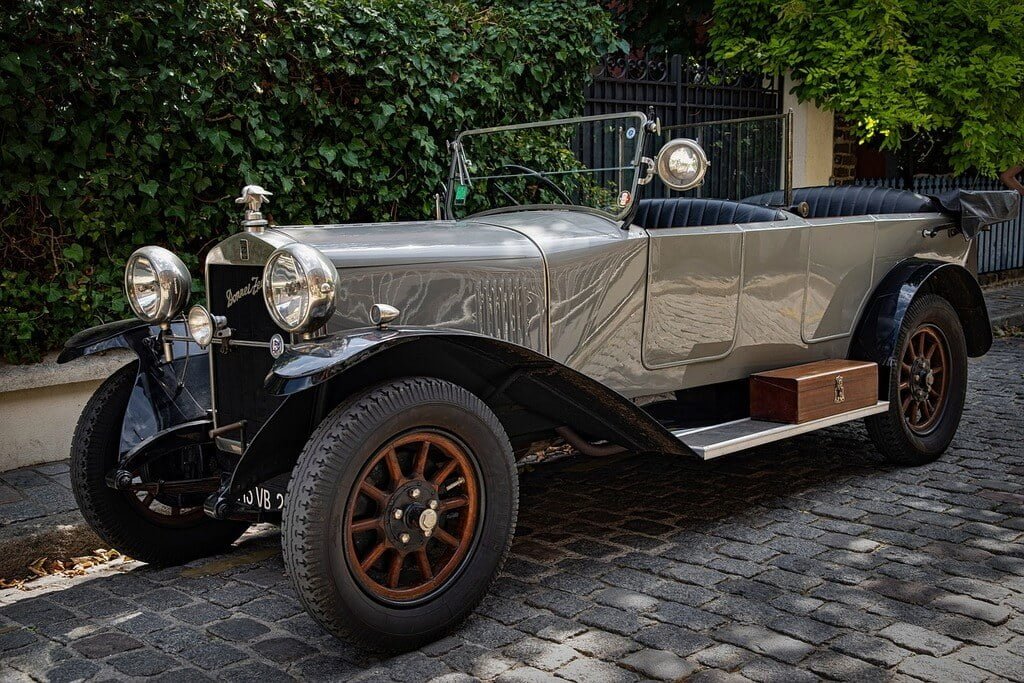The invention of the car stands as one of the most transformative moments in human history, reshaping the way we live, work, and connect. The journey from horse-drawn carriages to sleek, modern automobiles is a testament to human innovation. However, the question of who invented the car is not as straightforward as one might think. In this article, we’ll delve into the fascinating history of the automobile, exploring the contributions of various inventors and the evolution of this revolutionary mode of transportation.

The Birth Of The Carriage
Before we delve into the invention of the car, it’s crucial to understand the context in which this groundbreaking innovation took place. In the late 19th century, horse-drawn carriages were the primary means of transportation. These carriages, although effective, had their limitations in terms of speed, efficiency, and overall practicality.
Enter Karl Benz
While several inventors made significant contributions to the development of early automobiles, Karl Benz is often credited as the father of the modern car. In 1886, Benz unveiled the Motorwagen, widely considered the world’s first true automobile. This three-wheeled vehicle, powered by an internal combustion engine fueled by gasoline, marked a pivotal moment in the history of transportation.
Benz’s Motorwagen featured several groundbreaking innovations, including a four-stroke engine and a chassis designed for a motorized vehicle. It was a single-cylinder engine that generated about 0.75 horsepower, propelling the vehicle at a top speed of 10 miles per hour. The Motorwagen’s success laid the foundation for the mass production of automobiles, setting the stage for the automotive revolution that followed.
The Controversy Surrounding Invention
While Karl Benz’s Motorwagen is widely recognized as the first gasoline-powered automobile, the question of who invented the car is more nuanced. Several inventors were working on similar concepts around the same time, leading to debates about the true pioneer of the automobile.
One such contender is Gottlieb Daimler, a German engineer and industrialist who developed the high-speed liquid petroleum-fueled engine, a significant advancement in internal combustion technology. In 1889, Daimler and his collaborator Wilhelm Maybach built a four-wheeled vehicle that closely resembled what we recognize as a car today. This vehicle, the Daimler Motor Carriage, was another leap forward in automotive history.
The Benz-Daimler Merger
The competition between Benz and Daimler in the early days of automotive development was fierce. However, rather than continuing as rivals, the two pioneers ultimately joined forces. In 1926, the companies founded by Benz and Daimler – Benz & Cie. and Daimler-Motoren-Gesellschaft (DMG) – merged to form the iconic Mercedes-Benz brand. This merger not only solidified the legacies of both inventors but also played a crucial role in shaping the future of the automotive industry.
The Role Of Henry Ford
While European inventors like Karl Benz and Gottlieb Daimler were making strides in automotive technology, it was Henry Ford who revolutionized the industry with the introduction of assembly line production. Ford’s Model T, first introduced in 1908, was the first affordable, mass-produced car that made automobile ownership accessible to the general public.
Ford’s assembly line allowed for efficient, cost-effective production, significantly reducing the time and labor required to build a car. This innovation transformed the automotive industry and set a precedent for mass production methods that would be adopted across various manufacturing sectors.

Global Impact And The Rise Of Automobile Culture
As the automotive industry continued to evolve, cars became more than just a mode of transportation – they became a symbol of freedom, status, and modernity. The widespread adoption of automobiles had a profound impact on society, influencing urban planning, commerce, and cultural norms.
The availability of cars expanded people’s geographical reach, enabling greater mobility and connectivity. Suburbanization became more feasible as commuting distances increased, and the automobile played a crucial role in shaping the layout of modern cities. With the advent of road networks and highways, long-distance travel became more accessible, fostering economic growth and cultural exchange.
Environmental Concerns And Technological Advancements
While the car has undoubtedly revolutionized the way we live, it has also presented challenges, particularly in terms of environmental impact. The combustion of fossil fuels in traditional internal combustion engines contributes to air pollution and greenhouse gas emissions. In response to these challenges, there has been a growing emphasis on developing environmentally friendly alternatives, such as electric and hybrid vehicles.
In recent years, advancements in electric vehicle (EV) technology have gained momentum. Companies like Tesla have played a significant role in popularizing electric cars, promoting sustainability, and reducing dependence on fossil fuels. These technological innovations represent a new chapter in the ongoing evolution of the automobile, with an increasing focus on sustainability and eco-friendly transportation.
Final Thoughts
The invention of the car is a complex and multifaceted story, woven together by the contributions of various inventors and pioneers. Karl Benz, with his Motorwagen, is often credited as the father of the modern automobile, but the journey from horse-drawn carriages to electric vehicles involves a multitude of inventors, engineers, and visionaries.
As we reflect on the evolution of the car, it’s essential to recognize the interconnectedness of these contributions. The merger of Benz and Daimler and the mass production methods introduced by Henry Ford shaped the automotive industry’s trajectory. Today, as we navigate environmental challenges and embrace new technologies, the car’s story continues to unfold, promising a future of sustainable, innovative, and efficient transportation.
Also Read: What Year Did The Wright Brothers Make Their First Successful Powered Flight?
